A Journey into Rich Handlooms in India
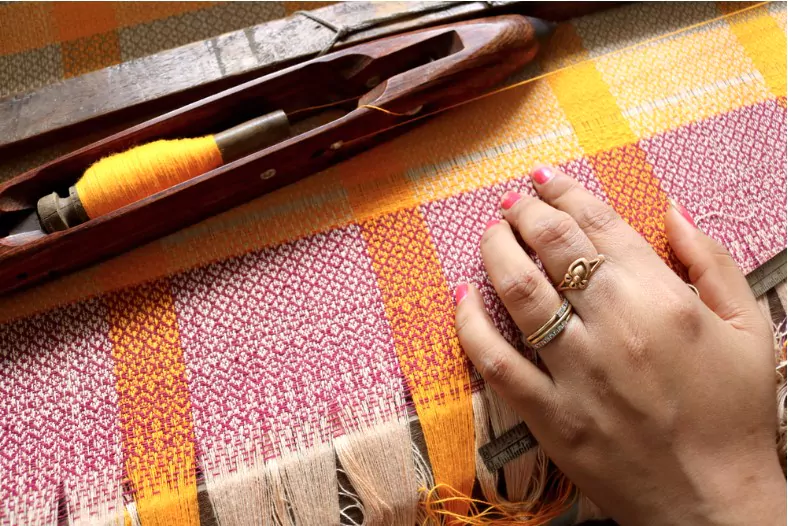
Handlooms in India are not just fabric or textile production methods; they are a vibrant symbol of the nation’s rich cultural legacy. Encompassing the richness of Indian heritage, every thread spun in the handlooms of India whispers a story of patience, tradition, and human skill. Artistic excellence, innovative designs, and intricate motifs mark the broad panorama of the handloom sector in India.
India, being a land of diversities, boasts of various handloom fabrics representing different regions. Let’s take a walk through the tapestry of Indian handlooms, a time-honoured tradition that represents the colourful and diverse cultural fabric of the country.
- A Journey Through the Handloom and Indian Legacy
- Banarasi Sarees from Varanasi, Uttar Pradesh
- Kanchipuram Silk from Tamil Nadu
- Pochampally Ikat from Telangana
- Bandhani from Gujarat and Rajasthan
- Chanderi from Madhya Pradesh
- Phulkari from Punjab
- Patola from Gujarat
- Jamdani from West Bengal
- Muga Silk from Assam
- Baluchari from West Bengal
- Paithani from Maharashtra
- Kasavu from Kerala
- Sambalpuri Ikat from Odisha
- Maheshwari from Madhya Pradesh
- The Handloom of India: A Thread of Economic Importance
- Challenges and the Way Forward
- Wrapping Up
1 A Journey Through the Handloom and Indian Legacy
Handloom weaving is a complex process requiring significant skill and patience. It starts with the preparation of the yarn that is later woven into fabric. While power looms have gained traction, the unique charm and artistry of handlooms remain unmatched, preserving the handloom and Indian legacy.
Banarasi Sarees from Varanasi, Uttar Pradesh
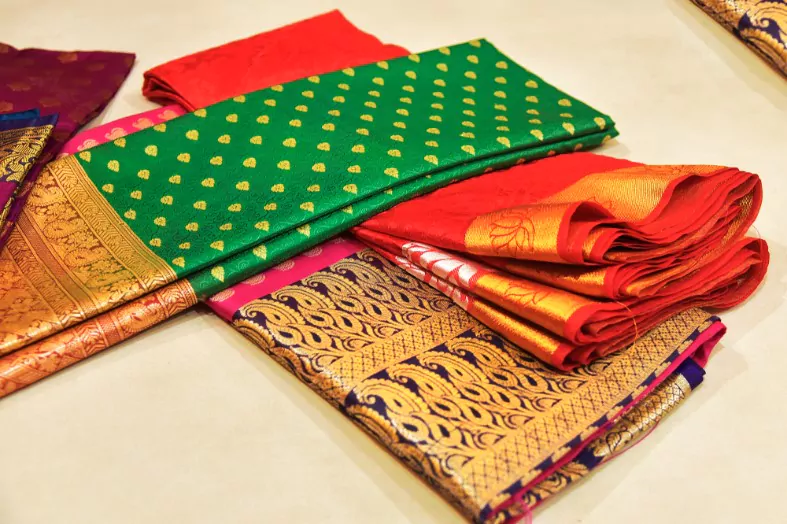
The city of Varanasi, earlier known as Banaras, is famed worldwide for its exquisite Banarasi sarees. The process of weaving these beautiful sarees is a rigorous one, with some sarees taking even up to six months to complete. These sarees are characterized by their gold and silver brocade or zari, fine silk, and opulent embroidery, making them an indispensable part of Indian weddings.
Kanchipuram Silk from Tamil Nadu
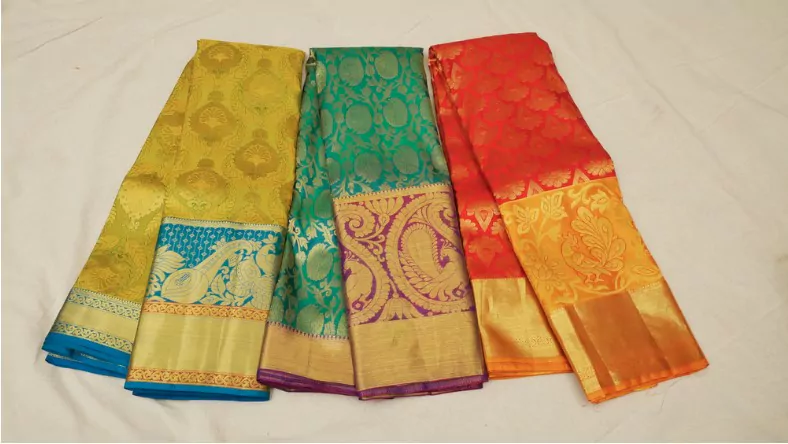
Popularly known as “Kanchipuram” or “Kanjivaram,” these sarees from Tamil Nadu are distinguished by their vibrant colours and grandeur. The heavy silk fabric, interspersed with rich zari work, depicts motifs like peacocks and flowers. The pallu, border, and body of the saree are woven separately and then delicately joined together. The durability of Kanchipuram silks makes them a treasured possession in many households.
Pochampally Ikat from Telangana
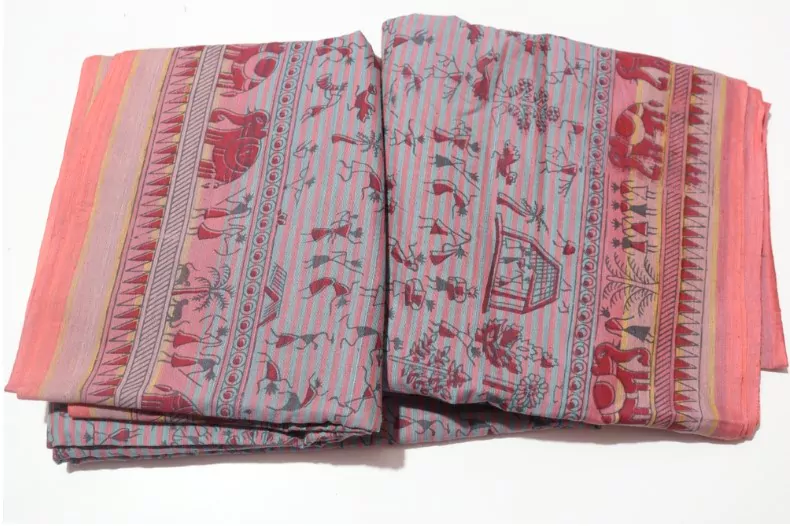
Hailing from a small town named Pochampally, the Ikat pattern is among the most popular handlooms in India. The unique characteristic of Ikat weaving lies in the process of dyeing the threads before they are woven. This lends the final fabric it’s signature blurred or feathered edge appearance. The geometric patterns and vivacious colours of Pochampally Ikat fabrics are a true testament to the craftsmanship of the weavers.
Bandhani from Gujarat and Rajasthan
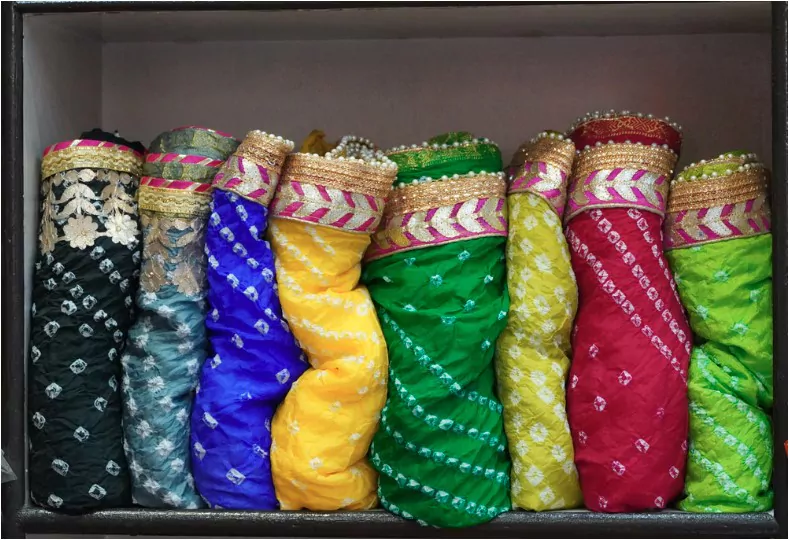
The term ‘Bandhani’ is derived from the word ‘Bandhan’ which means ties. This technique involves dyeing a fabric which is tightly tied with a thread at several points, thus producing a variety of patterns. The main colours implemented in Bandhani are natural, like indigo, yellow, red, black, and green.
Chanderi from Madhya Pradesh
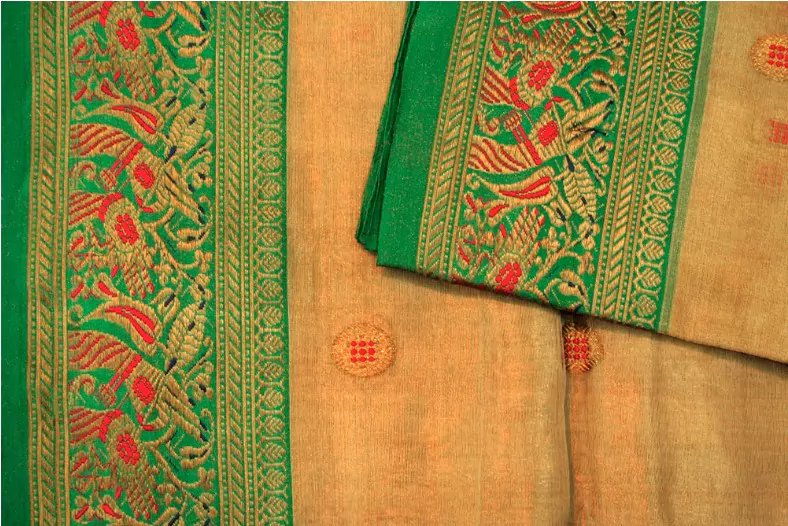
Chanderi, named after the town where it originates, is known for its sheer texture, lightweight, and glossy transparency. The distinctive feature of Chanderi fabric lies in its beautiful motifs, which are usually traditional coins, floral art, peacocks, and geometric designs.
Phulkari from Punjab
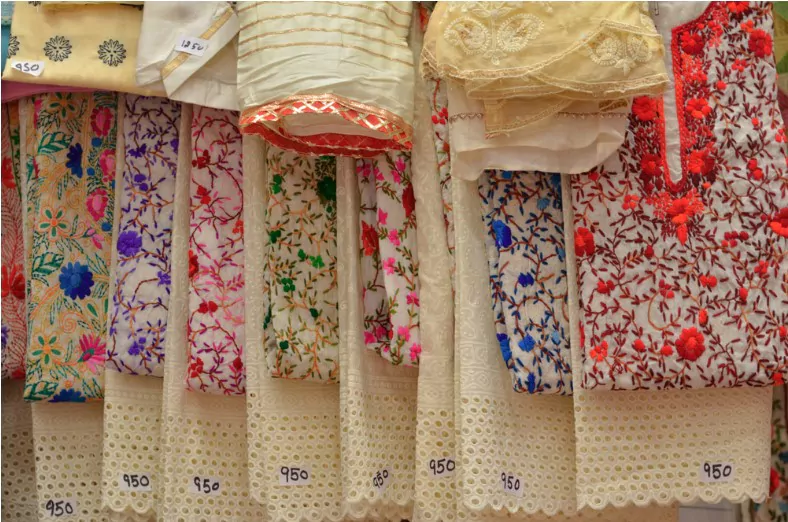
Phulkari, which translates to ‘flower work,’ is an intricate embroidery technique from Punjab. Traditionally, Phulkari shawls and dupattas are given as gifts during weddings or other significant events. This embroidery technique, characterised by vibrant thread work, often represents themes from the everyday life of Punjabi farmers.
Patola from Gujarat
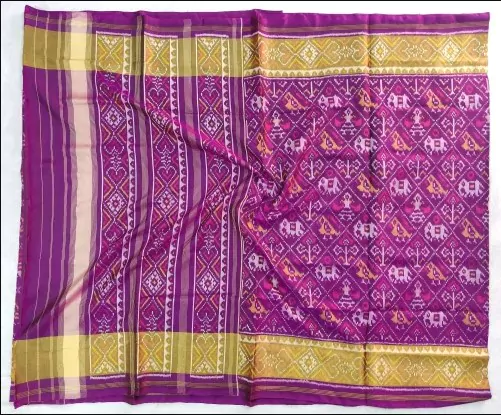
Patola sarees are double ikat woven silk sarees from Patan, Gujarat. Known for their geometrical patterns and bright colours, they are made from silk threads dyed with natural colours. Due to the intricacy of the work, a single saree can take up to six months to one year to complete.
Jamdani from West Bengal

Jamdani, a handloom woven fabric made of cotton, is a fine muslin textile of Bengal. This traditional weave is renowned for its artistic and intricate floral or geometric motifs. The saree has a sheer, glossy finish that gives it a luxurious appeal.
Muga Silk from Assam

Assam is home to Muga silk, a variety of wild silk known for its durability and natural yellowish-golden tint. The Muga silk sarees, traditionally adorned with motifs of animals and birds, are a symbol of elegance and richness.
Baluchari from West Bengal
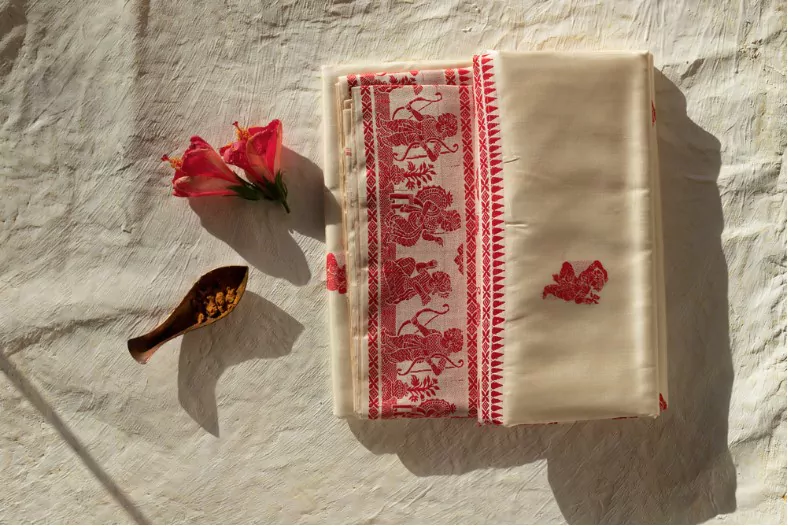
Originating from Bishnupur, West Bengal, Baluchari sarees are famous for their intricate designs depicting scenes from Indian mythology and epics like Mahabharata and Ramayana. These sarees are made using silk threads and have a unique, artistic appeal.
Paithani from Maharashtra
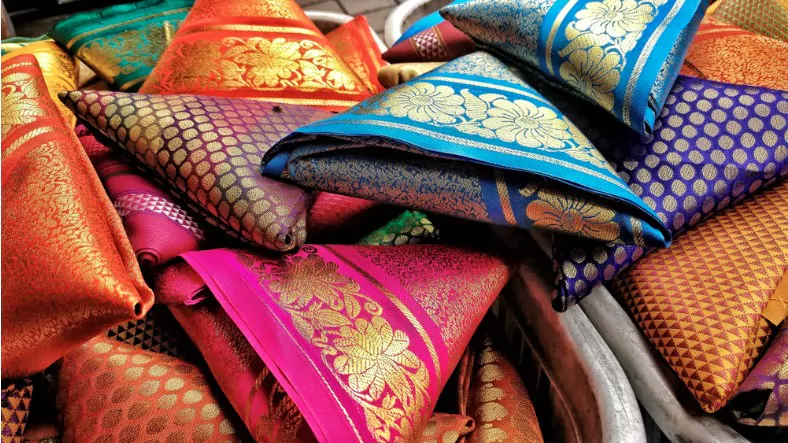
Named after the Paithan town in Aurangabad, Maharashtra, Paithani sarees are made from very fine silk and are considered one of the richest sarees in India. They are known for their signature motifs of parrots, peacocks, and lotuses.
Kasavu from Kerala

Kerala’s Kasavu sarees, traditionally worn during festivals and weddings, are recognizable by their cream-coloured body, golden border, and pallu. The elegant simplicity of Kasavu sarees, paired with the gold, makes them a striking piece of attire.
Sambalpuri Ikat from Odisha
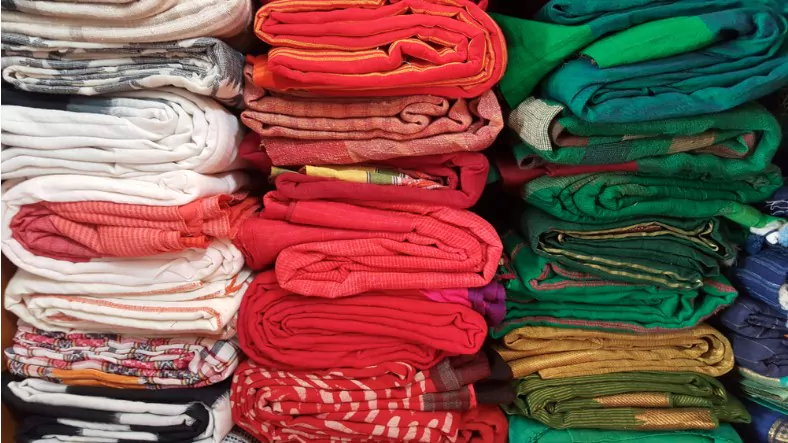
Sambalpuri Ikat is a traditional hand-woven saree where the warp and weft are tie-dyed before weaving. The saree is famous for its geometric patterns, and it can take weeks or even months to weave one, depending on the complexity of the designs.
Maheshwari from Madhya Pradesh

Originating from the town of Maheshwar in Madhya Pradesh, Maheshwari sarees are woven with cotton and silk threads. They are known for their lightness, shiny look, and characteristic reversible border, also known as ‘Bugdi’.
2 The Handloom of India: A Thread of Economic Importance
The handloom of India doesn’t just contribute to the preservation of cultural heritage; it also plays a significant role in the nation’s economy. The handloom sector is the second-largest employment provider for the rural population in India after agriculture.
According to the Handloom Export Promotion Council, India’s exports of handloom products amounted to USD 343.69 million in the year 2019-2020. The sector also contributes nearly 15% of the cloth production in the country. Apart from this, around 95% of the world’s hand-woven fabric comes from India.
3 Challenges and the Way Forward
Despite the handloom and Indian legacy being so closely entwined, the sector faces numerous challenges. Rapid mechanisation, competition from power looms, absence of modern technology, low productivity, and inconsistent quality are a few challenges plaguing the sector.
Recognizing these difficulties, various initiatives are being taken by the Government of India, including the promotion of Indian handloom products in national and international markets, financial assistance to weavers, and training programs to upgrade their skills. In addition, the annual celebration of National Handloom Day on August 7th is a testament to the nation’s commitment to safeguard and promote the handloom tradition.
Embracing sustainable fashion also opens a new path for the handloom sector. As global consumers grow increasingly conscious of their environmental footprint, they are gravitating towards eco-friendly products. Handlooms, being inherently sustainable and embodying the ‘zero waste’ principle, could potentially tap into this rising global trend.
4 Wrapping Up
Handlooms in India, reflecting the nation’s diverse culture and rich heritage, are much more than a mere symbol of traditional Indian wear. Each handloom product is a masterpiece that captures the skill, creativity, and dedication of Indian weavers. While the sector faces challenges, the efforts to overcome these are in full swing, ensuring that the handloom and Indian legacy continue to thrive.
In the era of fast fashion and mechanized production, let’s celebrate the uniqueness, sustainability, and human touch that the handlooms of India bring. By doing so, we not only support the livelihoods of numerous weavers but also contribute to the preservation of India’s cultural heritage. And that indeed is a fabric of legacy that we would be proud to wear.
Community Q&A
About This Article
This article has been viewed 430 times.



